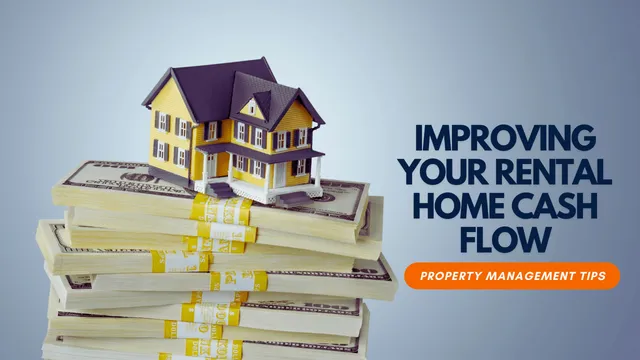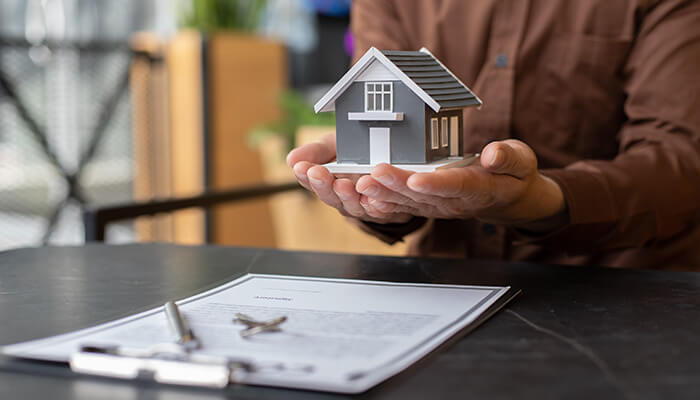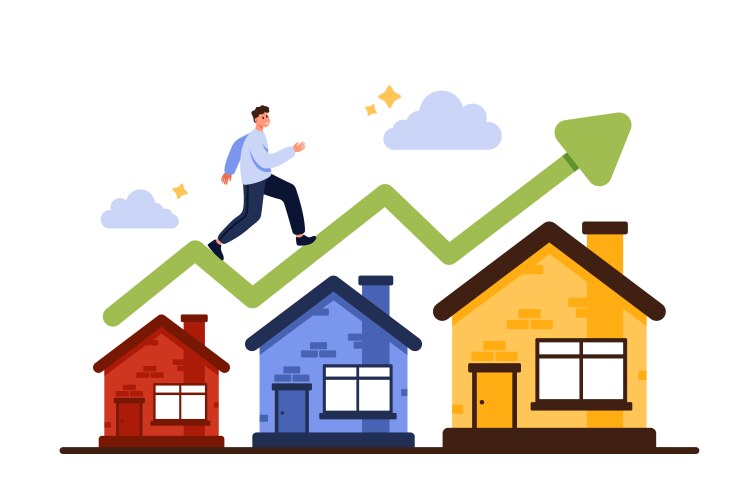Adding value to commercial property is essential for property owners and commercial real estate investors aiming to maximize returns. The value of a commercial property, which includes assets like office buildings, shopping centers, and industrial warehouses, can significantly impact net operating income and overall profitability.
Factors such as location, market trends, and the quality of existing leases play a crucial role in determining property value. In a competitive market, implementing strategies to increase commercial property value is vital.

Understanding Commercial Property Value
Commercial property value is determined by various factors, including location, size, condition, and potential for generating rental income. Key determinants also include market rents, local climate, and general market trends, which influence demand for commercial space.
example, properties in prime locations typically command higher rental rates and have a higher value. The property’s ability to attract and retain tenants, especially long-term tenants, also significantly impacts its value.
Additionally, external factors such as market appreciation and economic conditions can influence property values over time. Understanding these factors is crucial for property owners looking to increase the value of their commercial properties through strategic improvements and management practices.
Key Strategies to Add Value to Commercial Property
Adding value to commercial properties involves a combination of strategic enhancements and efficient management practices. Value add strategies focus on improving the property’s appeal, functionality, and financial performance.
Key areas include aesthetic improvements, facility upgrades, rental income optimization, and reducing operating expenses. Enhancing the property’s aesthetic appeal through renovations, improving infrastructure, and implementing energy-efficient features can significantly increase its value.
Additionally, optimizing leases, managing operating costs, and capitalizing on market trends are essential strategies for property owners looking to maximize their investment’s potential and increase the overall value of their commercial real estate.
Enhancing Aesthetic Appeal
Aesthetic improvements are a powerful way to increase the value of your commercial property. Simple upgrades such as installing new flooring or granite countertops can significantly enhance the interior appeal, making the space more attractive to potential tenants and increasing rental income.

The exterior appearance of the property, including the condition of the outside brick and landscaping, plays a crucial role in curb appeal. A well-maintained exterior can draw in potential tenants and set a positive first impression, contributing to a higher property value.
Regular maintenance, such as painting and cleaning, also prevents deterioration and preserves the property’s appearance and structural integrity. By focusing on both interior and exterior enhancements, property owners can create a more inviting and desirable space, thereby increasing the commercial property’s value and marketability.
Upgrading Facilities and Infrastructure
Upgrading facilities and infrastructure is a crucial strategy for adding value to commercial properties. Modernizing office buildings and industrial warehouses can significantly enhance their appeal and functionality. A well-planned commercial construction project can include installing energy-efficient standards, such as LED lighting, high-efficiency HVAC systems, and insulation, which reduce operating expenses and attract environmentally conscious tenants.
Upgrades like stainless steel appliances in commercial kitchens or break rooms add a contemporary touch that can increase the property’s appeal and justify higher rental rates. By investing in these improvements, property owners can enhance the property’s attractiveness, increase its value, and make it more competitive in the commercial real estate market.
Increasing Rental Income
Increasing rental income is a primary method for boosting commercial property value. Property owners can raise rents and adjust them to align with current market rents, ensuring they are maximizing revenue. It’s important to consistently raise rents, even incrementally, to keep pace with market conditions and inflation.
This practice helps maintain a healthy cash flow and ensures the property remains a profitable investment. Additionally, offering upgraded amenities or improving the property’s overall appeal can justify higher rental rates. Implementing these strategies not only enhances rental income but also increases the overall value of the commercial property, making it a more attractive investment for potential buyers.

Improving Property Management
Effective property management is key to maximizing the value of commercial properties. A property management company plays a vital role in managing operating expenses, maintaining the property, and ensuring tenant satisfaction. Hiring a property manager with a proven track record can lead to better management of day-to-day operations, including maintenance, rent collection, and lease negotiations.
Good property management helps in keeping operating costs under control, resolving tenant issues efficiently, and maintaining the property’s appearance and functionality. This, in turn, helps in retaining long-term tenants and attracting new ones, thereby enhancing rental income and overall property value.

Optimizing Leases and Tenant Mix
Optimizing leases and maintaining a diverse tenant mix are essential strategies for adding value to commercial properties. Managing existing leases effectively involves planning for leases to expire and renegotiating terms to better align with market conditions. Attracting long-term tenants who are likely to stay and renew their leases ensures a stable income stream. Additionally, filling vacant spaces with new tenants quickly helps maintain cash flow and reduces downtime.
Property owners should also aim for a balanced tenant mix that includes a variety of business types, reducing the risk associated with relying too heavily on a single industry. A well-managed tenant mix can lead to higher occupancy rates and a more resilient property value.
Reducing Operating Costs
Reducing operating costs is a critical aspect of maximizing net operating income and, consequently, the value of a commercial property. Property owners can implement strategies to decrease expenses, such as performing energy-efficient upgrades like LED lighting, low-flow fixtures, and energy-efficient HVAC systems. These improvements not only lower utility bills but also appeal to eco-conscious tenants.
Additionally, enhancing security features, such as installing surveillance systems and secure entry points, can prevent costly incidents and make the property more attractive to high-quality tenants. By focusing on reducing operating costs, property owners can increase their property’s profitability and overall value, making it more appealing to investors and potential buyers.
Capitalizing on Market Appreciation
Capitalizing on market appreciation is a powerful strategy for increasing the value of commercial properties. Understanding general market trends and how they influence property values is crucial for property owners. Factors such as economic growth, demographic shifts, and changes in local infrastructure can drive demand for commercial real estate, leading to market appreciation. Properties located in prime locations, such as business districts or areas undergoing revitalization, are particularly well-positioned to benefit from these trends.
By staying informed about market conditions and strategically investing in properties with high appreciation potential, property owners can significantly enhance the value of their assets over time, making them more attractive for future sales or refinances.
Utilizing Value Add Opportunities
Utilizing value add opportunities involves identifying and executing projects that can significantly enhance the value of a commercial property. These opportunities often include conversion projects, such as transforming underutilized spaces into more profitable uses, like converting a vacant office building into multifamily properties. Major renovations, including upgrading outdated facilities, improving energy efficiency, and modernizing common areas, can also provide substantial returns.
Such projects not only increase the property’s appeal to tenants but can also justify higher rental rates. By focusing on value add opportunities, property owners can transform a commercial property’s financial performance, thereby increasing its market value and attractiveness to investors.
Enhancing Property Security
Enhancing property security is essential for protecting both the property and its occupants, making it a key consideration for commercial real estate owners. Installing advanced security measures, such as surveillance cameras, access control systems, and well-lit parking lots, can deter crime and ensure the safety of tenants and visitors. Additionally, upgrading safety features, like fire alarms and emergency exits, improves the overall security profile of the property.
These enhancements not only help in attracting and retaining quality tenants but also potentially lower insurance costs. A secure environment increases tenant satisfaction and the property’s reputation, which can lead to higher rental income and a boost in overall property value.

Boosting Net Operating Income
Boosting net operating income (NOI) is a fundamental goal in commercial real estate deals, as it directly impacts property value and investment attractiveness. Net operating income is calculated by subtracting operating expenses from gross rental income, making it crucial to manage both effectively.
Strategies to increase income include optimizing rental rates, reducing vacancy rates, and enhancing tenant retention. Meanwhile, controlling operating expenses through efficient property management, energy-saving measures, and regular maintenance can further increase NOI. By focusing on increasing income and managing costs, property owners can improve cash flow, enhance the financial health of the property, and ultimately increase its market value.





